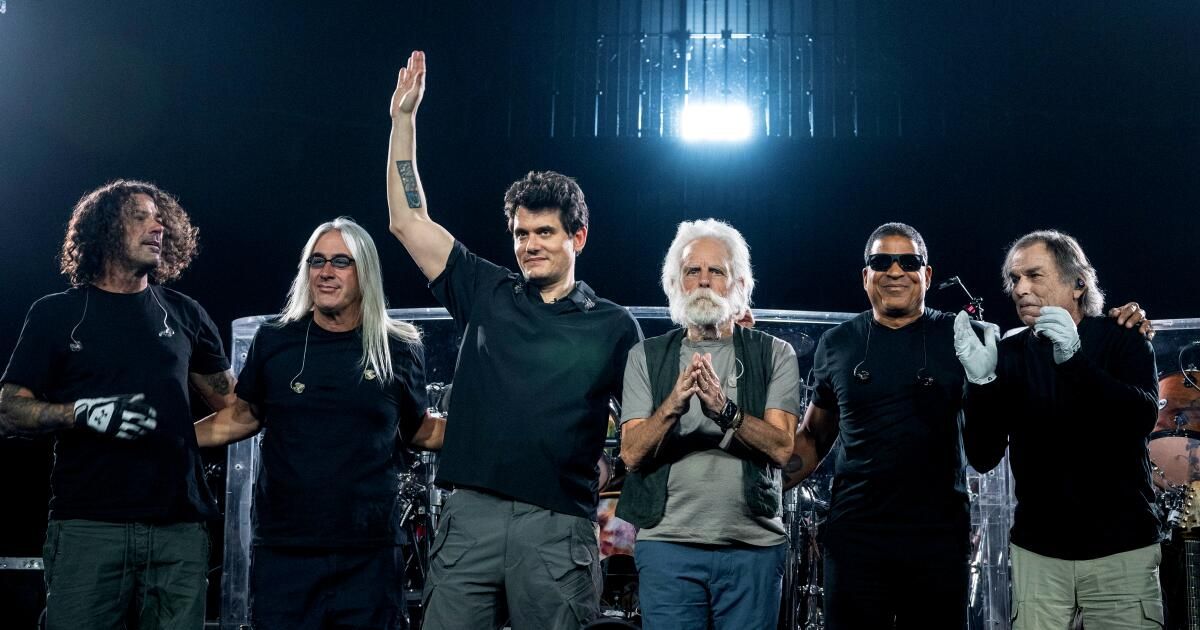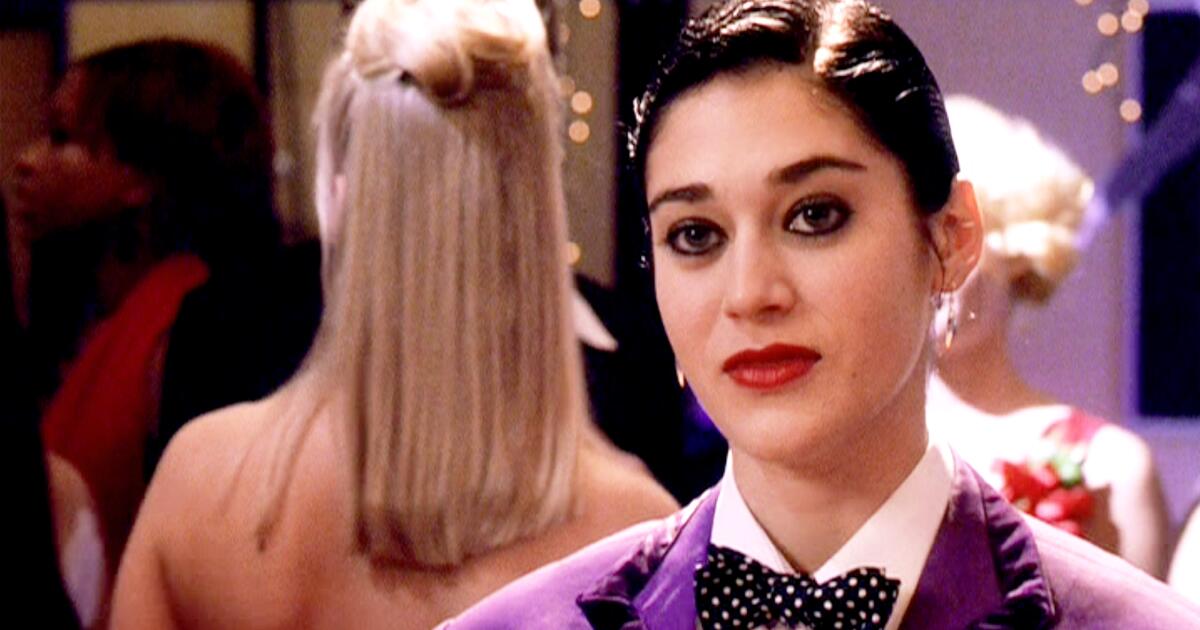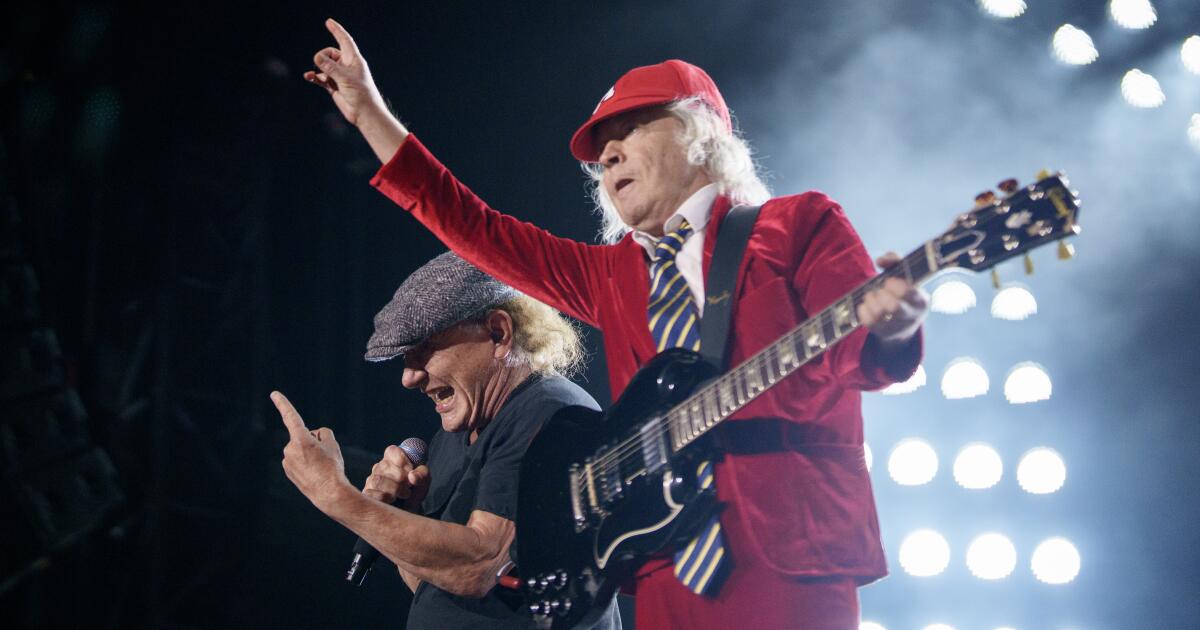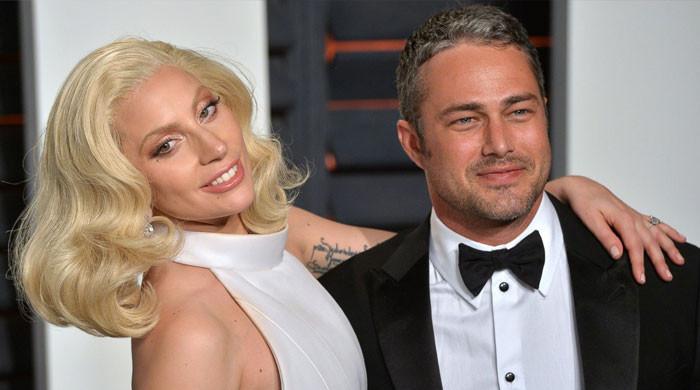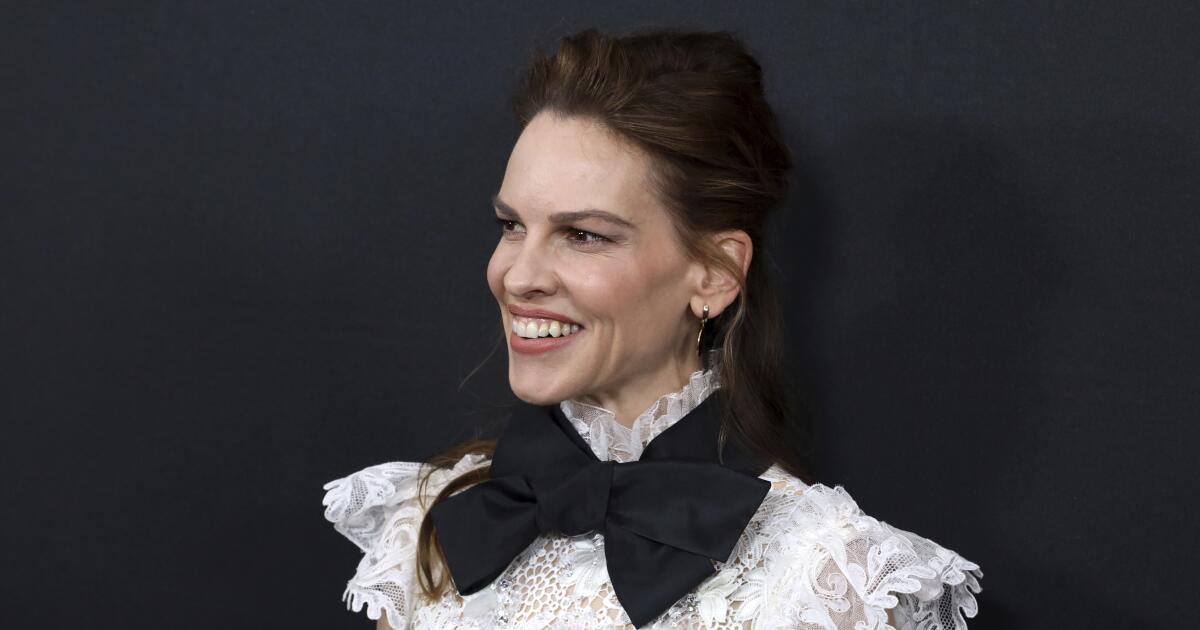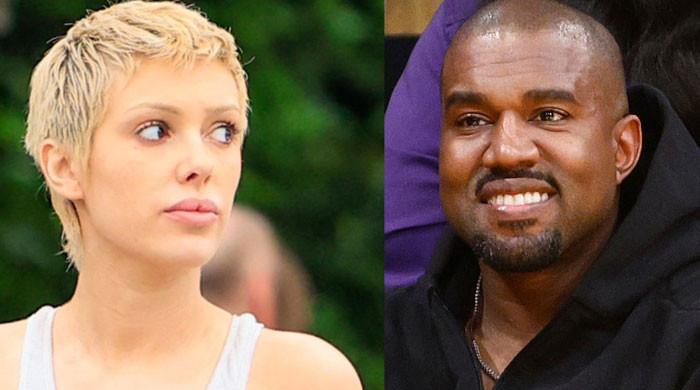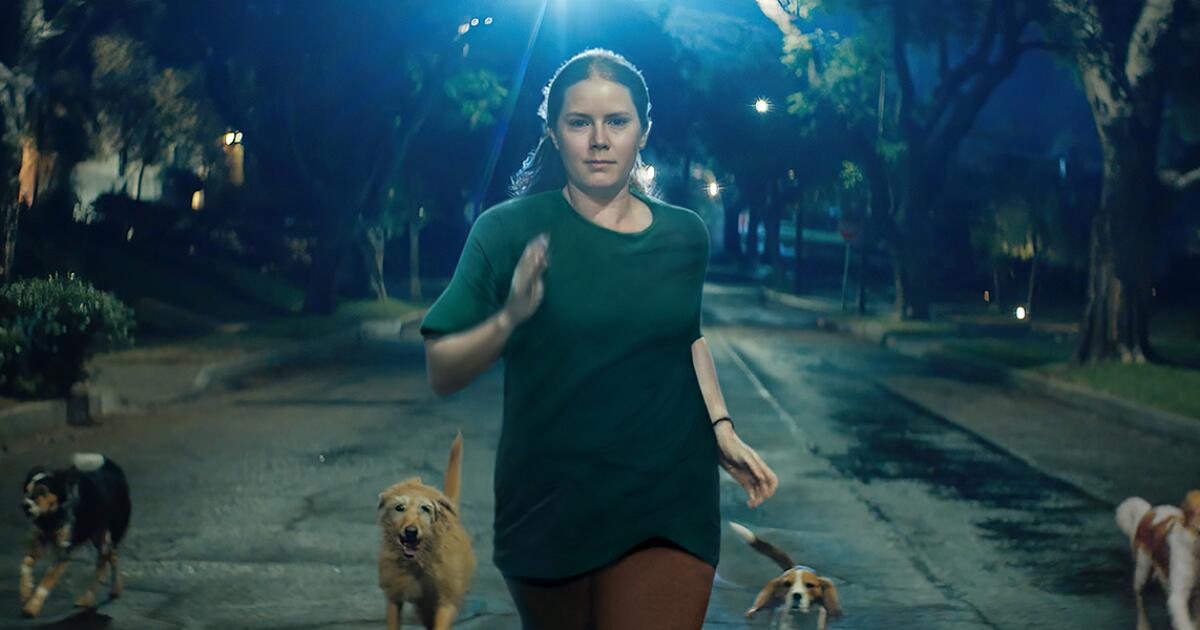About four hours before their shift beneath the massive surround-video screen at Sphere, Bob Weir, Mickey Hart and John Mayer enter a backstage production office like three guys showing up, again, for the job of blowing 17,000 people's minds.
“Nice to meet you,” Mayer says, smiling as he extends his hand. “John Mayer, Mayer Industries.”
As original members of the Grateful Dead, guitarist Weir, 76, and percussionist Hart, 80, are jam-band royalty; Mayer, 46, is the singer-guitarist known for pop hits like “Gravity” and “Your Body Is a Wonderland.” Together they represent the core of Dead & Company, which on this recent afternoon just spent half of a 30-date summer residency at Sphere, the state-of-the-art dome-shaped venue behind the Venetian resort on the Las Vegas Strip.
It's not that they're counting.
“Halfway through? If you say so,” Weir says as he sits in a lotus position on a couch next to his bandmates. Hart adds, hands clad in his trademark white golf gloves: “This is just a habit for us. We still come here three days a week and play our stuff.”
John Mayer calls Dead & Company’s Sphere residency “a journey through the metaphysical anthropology of the Grateful Dead.”
(Live coverage)
A year ago, they seemed poised to kick that habit: Having logged more than 200 shows since 2015 (when the band reunited following the Grateful Dead’s public farewell), Dead & Company wrapped up what was billed as its own final tour in July with three shows at Oracle Park in San Francisco, where the Grateful Dead formed in the mid-1960s and quickly became an avatar of the city’s Haight-Ashbury counterculture. (Dead & Company’s other members are bassist Oteil Burbridge, keyboardist Jeff Chimenti and drummer Jay Lane, the latter of whom replaced Bill Kreutzmann, another Grateful Dead founder, after Kreutzmann left in 2023.)
However, the prospect of Sphere's visual splendor drew the group back to the stage.
Featuring a 160,000-square-foot screen said to be the highest-resolution in the world, the $2 billion venue opened to great fanfare last fall with a dazzling U2 show that put the veteran Irish band amid photorealistic images of the Las Vegas desert in the pre-neon era; Phish followed U2 to Sphere in April, turning the building’s curved surface into an underwater lair and its soapy interior into a car wash.
Mayer believes the venue has “overnight established a new big league” of artists eager—and able—to harness Sphere’s technical potential.
“I think what we’re all loving is that there’s finally a live music space race again,” he says, dressed in tan cargo pants and a tight black T-shirt. “There’s the social media space race, the podcast space race, the AI space race.” [artificial intelligence] space race. But live music remained pretty much the same for so long.”
Mayer insists that it’s not ego that drives musicians to play Sphere — “Well, it’s a little bit of ego,” he clarifies — but rather the drive “to delight and surprise people more than they expected with this big empty canvas and this really big palette.”
Among the other offers Dead & Company received for engagements that didn't require extensive travel, Hart says, “This was a very juicy option.”
Dead & Company’s residency, which is called Dead Forever and runs through Aug. 10, has been a clear box-office success, with an average nightly gross of about $4 million, according to the band; what’s more, the group says nearly a third of concertgoers have bought tickets for more than one date, and that repeat buying is likely matched by considerable spending at Dead & Company’s pop-up merch store at the Venetian, where fans can pick up T-shirts, hoodies, and even a pair of handmade Belgian loafers featuring the band’s jaunty dancing bear logo (the shoes will set you back $395).
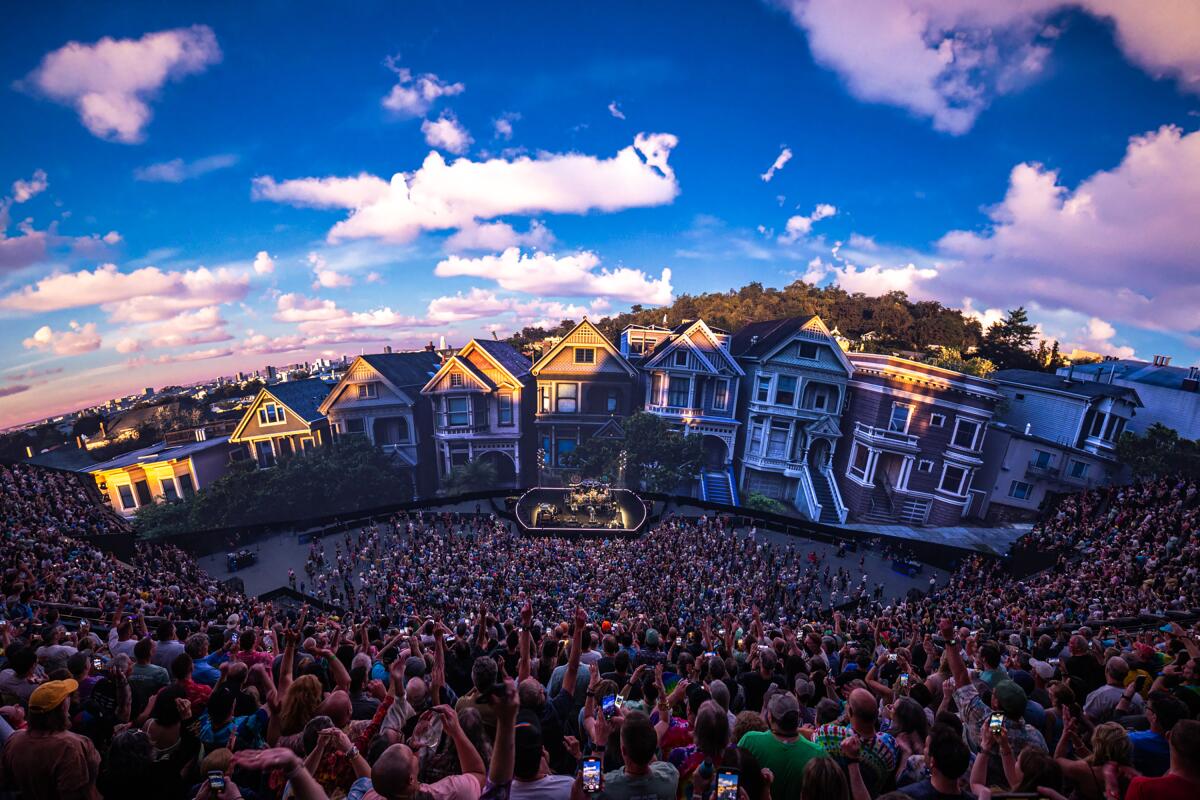
Dead Forever begins and ends with scenes set in the Dead's home neighborhood of Haight-Ashbury.
(Live coverage)
More importantly, Dead Forever is an artistic triumph: a showcase of the musicians’ deeply interconnected playing that achieves an emotionally rich narrative thrust thanks to the possibilities of the room. The show opens with a jaw-dropping sequence (engineered by Industrial Light & Magic and endlessly shared on TikTok) in which the audience appears to take off from Haight-Ashbury into outer space; three hours later, we return to Earth after having visited some key sites and moments in Dead history, including Cornell University’s Barton Hall in 1977 and the pyramids of Egypt in 1978.
“We’re taking it a step further,” Weir says as he munches on a handful of peanut butter-filled pretzels. The mustachioed guitarist compares Dead Forever’s narrative to opera; Mayer says the visual content, which he helped develop with the London-based Treatment Studio, “has a little bit of Disney in it.” Mayer came to the Dead relatively late in life after hearing the band’s “Althea” on Pandora; for him, this show represents “a journey through the metaphysical anthropology of the Grateful Dead with Dead & Company as hosts.”
Part of what seems to be animating Mayer — 29 years after Dead mastermind Jerry Garcia died of a heart attack at age 53 — is his desire to introduce the band’s music and iconography to younger listeners and people outside the traditional jam band ecosystem. And indeed, that seems to be happening in Las Vegas, as in the case of Tucker Halpern of the dance-pop duo Sofi Tukker.
“When I was a kid, the Grateful Dead didn’t play a huge role in my life,” Halpern says. As card-carrying millennials, though, he and his bandmate, Sophia Hawley-Weld, were intrigued enough by Mayer’s presence in Dead & Company to attend a recent Sphere concert. Their verdict? “Amazing, a really beautiful journey.” A more veteran hip-hop musician, Questlove of the Roots, offered similar praise in an Instagram post last weekend, calling Dead Forever “an incredible astral display.”
Of course, this kind of pop-culture penetration isn’t unprecedented for the Dead: In 1987, the band scored its only top 10 hit on Billboard’s Hot 100 with “Touch of Grey,” which was virtually inescapable on MTV (last month, Vampire Weekend covered the song at the Hollywood Bowl). The immersive audiovisual spectacle of Sphere’s production isn’t a novel concept for the group, either, as Rolling Stone senior writer David Browne points out.
“From the beginning, when you went to see the Dead in concert, you always had the feeling that you were entering a self-contained world, a kind of land unto itself,” says Browne, author of “So Many Roads: The Life and Times of the Grateful Dead.” “The light show and the psychedelic album covers were integral to their entire aesthetic.”
Yet Dead Forever certainly takes the performance to new levels of grandeur and precision. “I think there’s a part of us that loves the idea of spectacle, like ‘Places, People,’” Mayer says, and nothing in the show demonstrates that better than the finale, when night after night, Dead & Company perfectly time the end of a song to land in Haight-Ashbury.
Asked how they do it, Mayer acknowledges that Weir is “a time-aware genius,” though he also offers a more practical explanation. “It’s the result of years of hearing that if you go over the set time you’ll be fined $25,000 a minute,” he says, referring to the strict curfews imposed by unionized stagehands. “We might be 20 minutes late getting on, but not getting off,” he adds with a laugh.
“I pride myself on being able to watch the shop steward,” Weir says. “He thinks, ‘Wow, these guys are really into this…’ But I can cut him off when the clock is ticking.”
Weir, Hart and Mayer agree that a major benefit of Dead & Company's extended stay at Sphere is not having to constantly acclimate to the quirks of a new place.
“If you think about it, every time we go play somewhere, it’s an away game,” Mayer says. “This is the first time we’ve played at home,” he laughs. “You can leave a jersey at the venue and put it back on instead of having someone send it to you.”
Could that convenience prompt the band to undertake a second Sphere residency? Mayer says there likely won't be any more dates this year. (On Sept. 20, the Eagles will launch a 16-date residency scheduled to run through mid-December.) But, he adds, “I think the modularity of the show makes it future-proof.”
“It’s a work in progress,” says Weir, who foresees a greater degree of interactivity between the musicians and the crew controlling the images on Sphere’s screen. “At some point, the technology will evolve to the point where those guys will be able to intuit where we’re going and then be there with a little surprise for us.”
Mayer says, “There's a bit of regret knowing that every year will bring more freedom and dimension, that the 12th band here will have colors that we don't have. But I think this is the first time in a long time that we've felt honored to be a part of something that's so culturally appropriate for everyone.”
“We all thought: Isn’t this great?”

